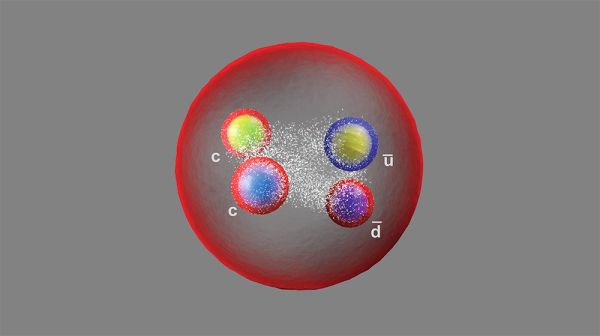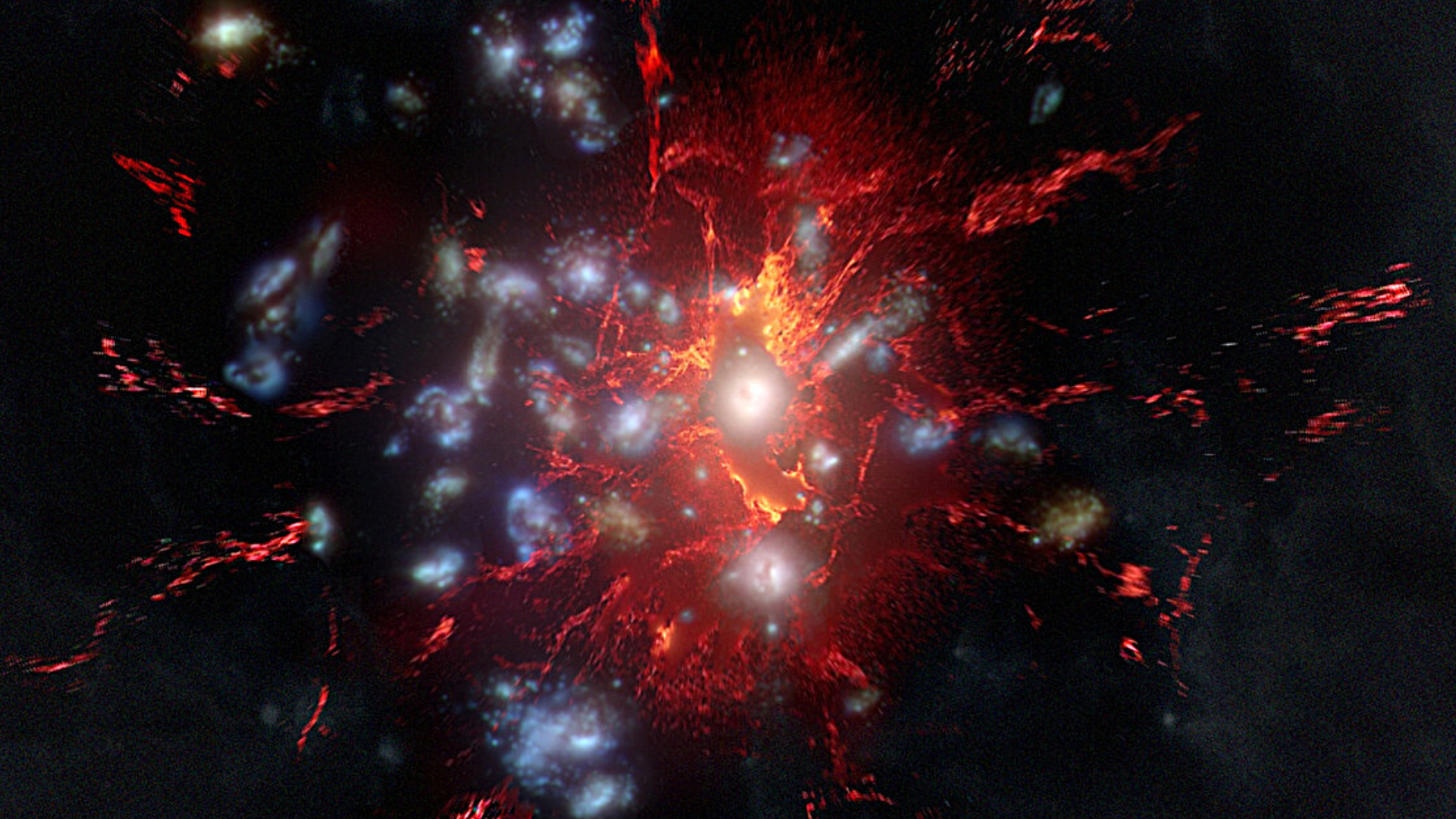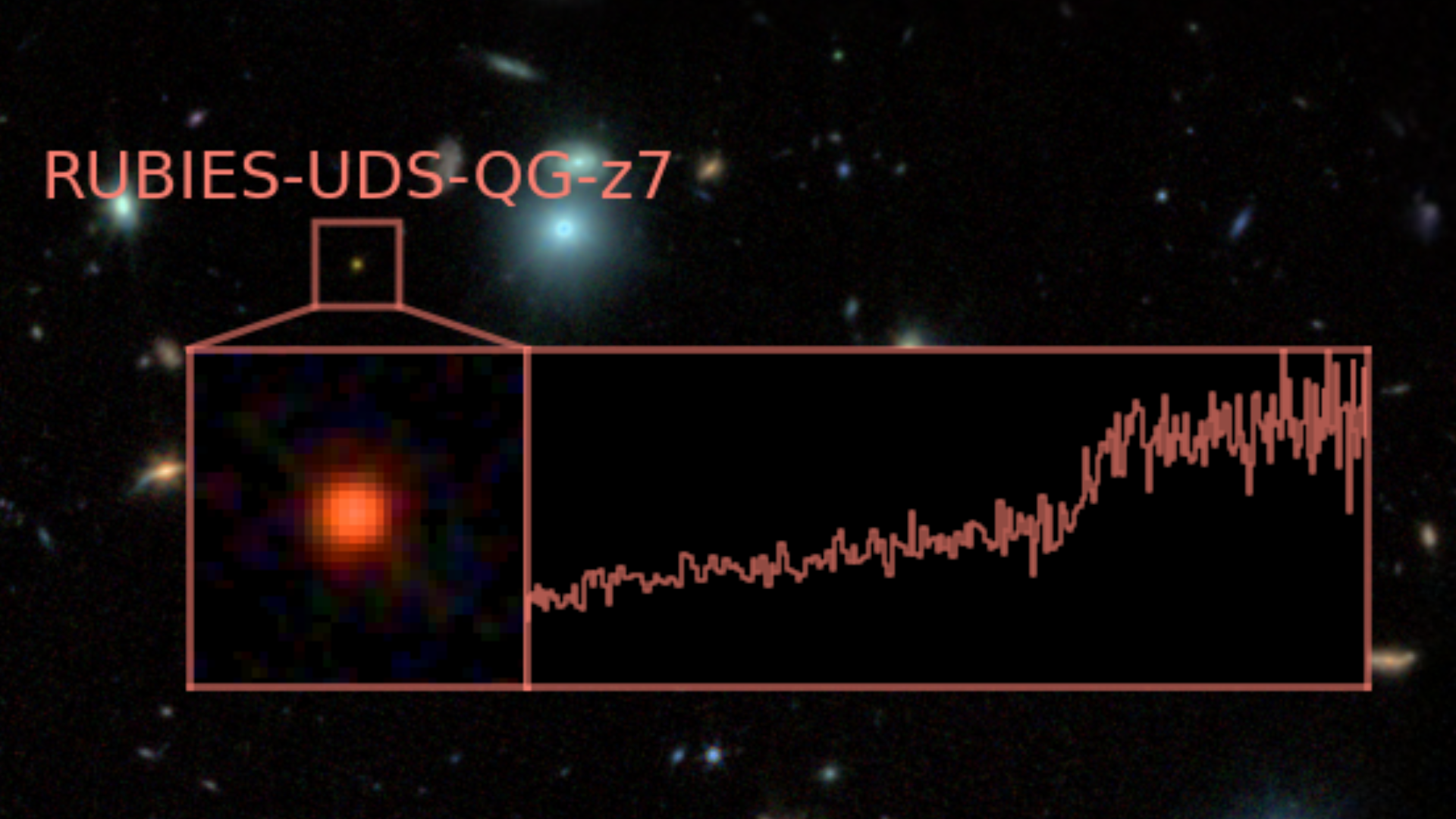'Doubly charming' tetraquark is the longest-lived exotic-matter particle ever found
The particle is the longest-lived exotic-matter particle ever found.

Scientists at the world's largest atom smasher have discovered the longest-lived exotic-matter particle ever observed, and it has twice the charm of anything discovered to date.
Physicists have yet to delve into the enigmatic nature of this newfound particle — called a double-charm tetraquark — but it's a truly weird mix, containing an unusual combination of two matter particles and two antimatter particles. And the doubly charming particle is so weird that we don't even know how its parts stick together.
The particles which combine to form the tetraquark, quarks, are some of the most basic building blocks of matter and come in six different types, or "flavors", each with their own masses and charge: up, down, top, bottom, strange, and charm. Though physicists have discovered many tetraquarks in recent years, this most recent addition — a mixture of two charm quarks and two antimatter quarks — is the first "doubly charmed" one, meaning it contains two charm quarks without any charm antiquarks to balance them out.
Related: Beyond Higgs: 5 elusive particles that may lurk in the universe
As for how the quarks are arranged inside the new tetraquark: All of the particles may be glued together equally, they may be two quark-antiquark pairs jumbled loosely together into a "molecule" or they may be a strange mixture of both, Matteo Palutan, a particle physicist at the National Laboratories of Frascati in Italy and the deputy spokesperson for the Large Hadron Collider beauty (LHCb) experiment, told Live Science.

Because quarks cannot exist on their own, they fuse together into various particle "recipes" called hadrons. Mixtures of three quarks are called baryons — such as the proton and the neutron — and mixtures of quarks and their antimatter opposites are called mesons.
But there's no hard-and-fast rule that quarks need only exist in pairs or triplets. Chris Parkes, a physicist at the University of Manchester in England and the spokesperson for the LHCb experiment, said theories have predicted the existence of hadrons containing more than two or three quarks since the early 1960s, but only in recent years have physicists spotted these hadron combinations briefly winking into existence. The first tetraquark to be discovered was found in 2003 by the Belle experiment in Japan. Since then, physicists have discovered a whole series of the four-quark hadrons, and in 2015, they found two more, classified as "pentaquarks," which contained five.
Get the Space.com Newsletter
Breaking space news, the latest updates on rocket launches, skywatching events and more!
These rarer and odder combinations of quarks are known as exotic particles, and they have unusual properties that could help physicists better understand, or even rewrite, the rules governing matter.
"There are a wide range of predictions for what exotic states should be seen and what their properties will be," Parkes told Live Science, referring to the plethora of proposed extensions to the Standard Model — a theory which describes all of the known fundamental particles and their interactions, but omits details on exotic particles and how they may be glued together. "As we discover more of these exotic hadrons, we can tune these models and test their predictions, so that we can learn more about how quarks combine to form hadrons."

Although exotic particles are enticing objects for study, their incredibly short lifetimes make them difficult to investigate. The comparatively "long" life span of the double-charm tetraquark (written scientifically as Tcc+) causes it to appear in the Large Hadron Collider (LHC), the world's largest particle accelerator, for slightly longer than one-quintillionth of a second before it decays into lighter particles, the researchers said.
Nonetheless, the double-charm tetraquark has a longer lifespan than most exotic particles. This long life, along with the fact that the smaller particles it decays into are relatively easy to detect, makes it a perfect candidate for physicists looking to test existing theoretical models or probe for previously hidden effects.
Physicists at the LHC found the new tetraquark through "bump hunting," a method that has revealed 62 new hadrons since 2009, including the famed Higgs boson in 2012. Put simply, bump hunting involves combing through data from the many thousands of millions of particle interactions logged by each of the LHC's detectors. After all of the background noise and the signals from known interactions have been ruled out, any unexpected spike in the system's readings could provide a vital clue that something more unusual occurred. Bump hunts can take anywhere from two to three years, Parkes said.
Usually, tetraquarks decay through the strong force — one of the four fundamental forces of nature — but they don't have to decay that way. While Tcc+ does decay via the strong force, physicists think it could point the way to a yet-to-be-discovered tetraquark that is forbidden from breaking down in this way. In theory, one undiscovered cousin of Tcc+, named Tbb (which contains two bottom quarks instead of two charmed quarks), should decay only through the weak force, giving it a life span orders of magnitude longer than that of Tcc+ or of any other quark, Palutan told Live Science.
But because the Tbb is much harder to find than any other tetraquark yet spotted, physicists will likely need a more powerful detector to catch it. The data used to find the Tcc+ came from the LHC's two previous stints online, and Parkes believes it's unlikely that data from those runs will yield a signal of the elusive Tbb. Instead, the researchers are planning to look for the particle in the data from a new run, using an upgraded detector, that will begin next year.
The new detector "will allow us to accumulate signal events at five times the rate we were used to during the past years," Palutan said. "So we're confident that if the Tbb is there, we will be able to catch it. It is a matter of being patient."
Originally published on Live Science.
Join our Space Forums to keep talking space on the latest missions, night sky and more! And if you have a news tip, correction or comment, let us know at: community@space.com.

Ben Turner is a U.K. based staff writer at Live Science. He covers physics and astronomy, among other topics like weird animals and climate change. He graduated from University College London with a degree in particle physics before training as a journalist. When he's not writing, Ben enjoys reading literature, playing the guitar and embarrassing himself with chess.










